Sensors already equip a range of tools to enhance monitoring capacity for conservation. Some of the higher bandwidth technologies, like camera traps and acoustic monitoring systems, have been essential elements of the conservation toolkit for decades, and thus have enough users that we've created dedicated WILDLABS groups to address them. But a whole range of lower bandwidth sensors beyond these core technologies are being increasingly integrated into conservation monitoring systems, and offer rich new insights into the wildlife and ecosystems we're all working to protect. As with many technologies, cost and access have historically been challenges to the adoption of new sensors, but with low-cost and open-source solutions on the rise, we're excited to see what the future of this space holds.
Getting Started with Sensors:
- Watch Shah Selbe's Tech Tutors episode on scaling FieldKit, an open-source conservation sensor toolbox, from a project to a successful conservation tech product.
- Check out our Virtual Meetup about Low-Cost, Open-Source Solutions in conservation tech, including a talk by Alasdair Davies on the Arribada Initiative's work with thermal sensors in early warning systems.
- For a more in-depth introduction, watch the first video in our datalogger mini-series: Freaklabs: How do I get started with Arduino?
In this group, you'll meet others who are using and innovating diverse sensors in their work, discuss ways to make sensors more effective & accessible for conservationists, learn about what sensors are already helping us accomplish in the field, and have the opportunity to ask and answer questions. Join this group to get started!
Header image: Emma Vogel, University of Tromsø
- @kristian.cuervo
- | He/Him
Applied Mathematics student in Denmark, interested in applications of mathematics to ecology and nature conservation. Currently interested in developing sensors for perimeter detection in wildlife conservations in Africa.
- 0 Resources
- 4 Discussions
- 9 Groups
- @Jen_NZ
- | she/her
- 0 Resources
- 2 Discussions
- 7 Groups
- @cappel
- | she/her
Wildlife Science PhD candidate working on computer vision with camera traps and bioacoustics
- 0 Resources
- 4 Discussions
- 13 Groups
- @capreolus
- | he/him
Capreolus e.U.
wildlife biologist with capreolus.at





- 1 Resources
- 78 Discussions
- 16 Groups
- @JakobWiren
- | He,him
Swedish soon-to-be graduate engineer in AI/ML and robotics. Writing my master thesis in using decision trees for anti-poaching in Limpopo, South Africa. Am passionate about conservation, AI and travelling. Help me find a way to help you!
- 0 Resources
- 1 Discussions
- 13 Groups
- @Mauricio_Akmentins
- | he/him
National Scientific and Technical Research Council of Argentina (CONICET)
Researcher and conservationist, focused on the conservation of the endemic and threatened amphibian species of Andean ecoregions of NW Argentina.

- 1 Resources
- 3 Discussions
- 6 Groups
Software Engineer, Web Developer, Tech Enthusiast. I am software engineer with a background in instrumentation, primarily developing using C/C ++. Skilled in web development, with a Grad Cert in Web Development. Enjoy experimenting with tech, e.g. Raspberry Pi, Arduino and IoT.
- 0 Resources
- 0 Discussions
- 7 Groups
Soil science, droughts effect of poverty, human rights advocate, wage equality in Europe, Drones in Digital Education



- 3 Resources
- 10 Discussions
- 19 Groups
- @Freaklabs
- | He/Him
Freaklabs
I'm an engineer and product designer working on wildlife conservation technology.



- 0 Resources
- 302 Discussions
- 20 Groups
Natural Solutions
Computational ecologist - Engineer at Natural Solutions (France)



- 0 Resources
- 1 Discussions
- 13 Groups
- @UrsusAmer66
- | He/Him
Research Ecologist focused on human disturbance and ecophysiology
- 0 Resources
- 0 Discussions
- 5 Groups
- @avilabon
- | He/Him/His
My name is Albert Vila, and I have a multidisciplinary background in earth sciences, design, and technology. I hold degrees in Environmental Sciences, GIS, Bioarchitecture, and Emerging Futures Design. My work focuses on biodiversity, natural areas, and technology.
- 0 Resources
- 0 Discussions
- 5 Groups
PhD position available at the University of Konstanz in the Active Sensing Collective Group!
28 March 2025
We are hiring for a customer support / marketing specialist.
20 February 2025
Osa Conservation is launching our inaugural cohort of the ‘Susan Wojcicki Research Fellowship’ for 2025, worth up to $15,000 per awardee (award value dependent on project length and number of awards given each year)....
10 February 2025
New paper - "acoupi integrates audio recording, AI-based data processing, data management, and real-time wireless messaging into a unified and configurable framework. We demonstrate the flexibility of acoupi by...
7 February 2025
The Conservation Technology Laboratory within the Population Sustainability department is seeking two fellows for summer 2025
5 February 2025
Conservationists use tools like drones, satellites, and camera traps to monitor ecosystems and scale their impact. But new challenges like transparency, funding gaps, and engagement remain. Web 3.0 technologies offer...
28 January 2025
The worst thing a new conservation technology can do is become another maintenance burden on already stretched field teams. This meant Instant Detect 2.0 had to work perfectly from day 1. In this update, Sam Seccombe...
28 January 2025
The Zoological Society of London's Instant Detect 2.0 is the world's first affordable satellite connected camera trap system designed by conservationists, for conservationists. In this update, Sam Seccombe describes the...
21 January 2025
Over the years, a large number of developments have gone up in the area that I live in and the municipality is not doing what they should when it comes to upholding the laws that have been put in place to protect the...
20 January 2025
The Marine Innovation Lab for Leading-edge Oceanography develops hardware and software to expand the ocean observing network and for the sustainable management of natural resources. For Fall 2025, we are actively...
6 October 2024
Join the team at FieldKit, an open-source software and hardware sensor platform, and help us validate the quality and usability of the FieldKit platform.
25 September 2024
September 2024
event
16 Products
Recently updated products
117 Products
1 R&D Projects
81 Organisations
Recently updated products
Recently updated R&D Projects
Recently updated organisations
| Description | Activity | Replies | Groups | Updated |
|---|---|---|---|---|
| Thanks for sharing this event, Jenny! Looks really interesting, hope to see you there. |
|
Sensors | 8 years 11 months ago | |
| Hi John and Adam, I've been hearing a lot about Oxford Nanopore Technologies and MinION over the last few months, and while it sounds fanastic, it's been... |
|
Sensors | 8 years 11 months ago | |
| Sensory: BBC Wildlife Director John Downer & the technology of 'spy-cam' filmmaking from Getty Images on Vimeo.Small Cameras, Big... |
|
Sensors | 9 years ago | |
| Hello all, I've been reading a lot about advancements in using thermal imaging technology for wildlife monitoring. I know... |
|
Sensors | 9 years ago | |
| Latest news about this project was picked up by the BBC world service for a short interview http://www.bbc.co.uk/programmes/p03nwl8g You can also read more here: http://... |
|
Sensors | 9 years 1 month ago | |
| Hi everyone, I'm working on a citizen science project forcused on using aquaculture for conservation and ecological... |
|
Sensors | 9 years 2 months ago | |
| That's great Jason. I think your approach can be very successful. I'm a little bit familiar with Wild Book through my contacts at IBEIS, who I believe you... |
|
Sensors | 9 years 2 months ago | |
| I was amused to read about a flock of pigeons just released in London to tackle pollution. The flock was equipped with pollution... |
|
Sensors | 9 years 2 months ago |
Whats de best open source methane analyzer for soil?
21 October 2022 3:36pm
Rainforest SigFox available for use
26 August 2022 6:09pm
10 October 2022 8:33am
Hi Rolland,
Interested too, but why did you choose SigFox (a private network) rather than LoRa (open network)?
Sigfox currently has some financial troubles that, don't know what it will become in the long term.
18 October 2022 11:55am
Hi Everyone,
We chose sigfox becuase it seems to have better range and is plug-play, whereas LoRa requires more custom programming and updating. Getting a gateway cost us $2000 for a year's lease + deposit. We covered solar power. There are also some 'minigateways' you can purchase but I don't know how they compare in range (plan to test). So far we are happy with the performance, in that it has worked consistency with no outages (once we stabilized the power supply). I think the annual costs are about $10 per tag. We are working on a paper that will describe this in more detail. So far just using for tracking tags but also looking at a trap sensor.
cheers
Roland
Using lidar to 3d scan animal burrows
17 October 2022 4:21pm
17 October 2022 4:23pm
here's an example of what I'm doing.
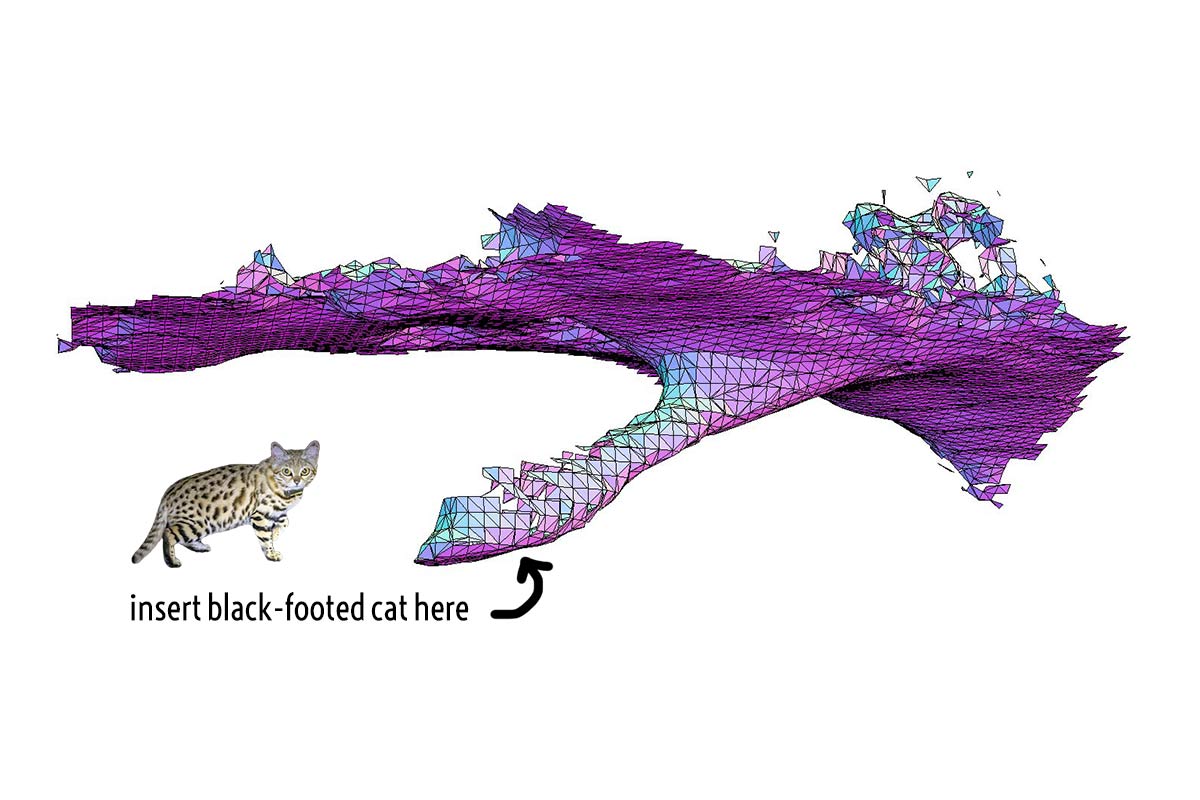
New paper: Benthic animal-borne sensors & citizen science combine to validate ocean modelling
10 October 2022 4:15pm
Frontiers Symposium: Digital tools for reversing environmental degradation
5 October 2022 10:23am
Roddenberry Foundation’s Catalyst Fund
4 October 2022 11:13am
MIT engineers build a battery-free, wireless underwater camera
26 September 2022 2:59pm
Mangrove soundscape
27 August 2022 4:57pm
29 August 2022 2:47pm
You might check out the devices listed in the Conservation Tech Directory - you can search for 'acoustic recorder' or 'ARU' or something like that.
The most common off-the-shelf models (other than Frontier Labs' BARLTs mentioned above😊) are Open Acoustic Devices Audiomoths & Hydromoths (which may be particularly useful for you since they come in completely watertight cases that can be stuck underwater for deployments), Wildlife Acoustics' SongMeter series, and Cornell Lab of Ornithology's Swift units.
30 August 2022 10:10pm
Camilo--
Are you interested only in airborne sounds or do you want to deploy hydrophones? That decision would inform a lot of other decisions about your purchase of equipment, as would having a clearer picture of your budget.
23 September 2022 5:39pm
Hi there Camilo,
What an interesting project! If you are looking for a lower cost, but effective tools for acoustic monitoring you might want to look into two options:
SoundTraps - are very commonly used and perform quite well:
SonarPoints - these are also a great instrument option:
page/sonarpoint | Desert Star Systems
The SonarPoint system is the third generation of Desert Stars passive underwater acoustics monitoring toolkits.
Avian nest box monitoring
14 September 2022 2:30pm
14 September 2022 3:08pm
Maybe this is a starting point. Any idea if this product would work inside the box. Kestrel DROP D3 Wireless Temperature, Humidity & Pressure Data Logger https://amzn.eu/d/5VdQwtA
23 September 2022 12:34pm
I'd be interested in any camera monitoring setups that can be used inside a nest box. Most camera traps are too bulky for this purpose. All the devices I've looked at either need a wired connection or a wifi network to transmit images. I want one that can store all info to an SD card and preferably be solar powered. Obviously infrared or starlight sensitivity. Sound recording would be a bonus for some bird monitoring I want to do.
23 September 2022 1:16pm
Done lots of this over the years and it depends on the species really. If you want incubation behaviour and hence success or otherwise using temperature then the Thermocron IButton DS1921G is perfect. The new Blue Maestro is an option I became aware of this year but I haven't tested at scale.
In terms of cameras and endoscopes I've tailored many off the shelf products and built a few from scratch. When I get chance I'll have a look around and see what is still available.
The planet matters. People matter. Location matters.
23 September 2022 12:16pm
Movement Ecology Field Team and Data Coordinator: Osa Conservation [Open until filled)
22 September 2022 11:55pm
Senior Conservation Technology Expert Position (Consultancy) with the Global Wildlife Program
22 September 2022 5:35pm
Workshop: Building UK Partnerships for Conservation Technology
22 September 2022 3:02pm
World Ocean Tech and Innovation Summit
13 September 2022 1:12pm
Catch Up with the Variety Hour: September 2022
6 September 2022 12:31pm
Virtual fencing / Kinetic energy harvesting / Holistic grazing
16 June 2022 7:12am
26 July 2022 11:13am
Hi,
One daily fix is planned for now. This will be challenging enough for KEH :)
Kr, D-
31 July 2022 5:15pm
I see, thanks!
One daily fix is quite limiting.
Do you have an idea how KEH might affect accelerometry?
Cheers,
2 September 2022 11:05am
I don't think KEH would influence accelerometry at all.
One other way to think about it is - the KEH is a movement sensor itself.
The GPS is quite a severe factor in the energy balance of the system, so if the data is perhaps not transmitted constantly, more frequent locks could be achieved. I believe GPS transceivers are becoming more and more efficient and the KEH enabled GPS should become an option soon.
Kr,
D-
Conservation Technology Research Internship
26 August 2022 4:58pm
Ceres Wild Rhino application
22 August 2022 1:29am
29 September 2022 4:05am
Post Doctoral researcher - DNA species detection technology
15 August 2022 4:50pm
Research Technician - Unoccupied Aircraft Systems Pilot and Geospatial Analyst
10 August 2022 10:40pm
3yr Postdoctoral Associate: Remote Sensing and Unoccupied Aircraft Systems
10 August 2022 5:29pm
Sulcata tortoise tracker options
8 August 2022 10:07pm
CERES TAG
22 July 2022 3:36am
The battery challenge - how to reduce battery waste
8 February 2019 2:00pm
29 June 2022 8:47pm
Realizing I'm hopping onto this thread late, but I think one of the easiest ways to handle batteries is simply to work to minimize energy consumption--identify areas where we can improve deployment duration while generating comparable ecological knowledge. For example, in the case of the acoustic sensors I work with, can we reduce sample rates and still pick up our species of interest? Can we use a sparser duty cycle while still generating sufficient information to answer whatever our relevant questions are?
15 July 2022 10:09pm
So-called "Li-Ion AA" batteries are a potential alternative to NiMH for applications requiring AA form-factor batteries. These "batteries" contain internal power converter to go from Li-Ion cell voltage (3.7V) to AA standard 1.5 Volt. Based on lab (not field) experiments, they perform better than NiMH over temperature, and have a longer lifetime, though they are more expensive. I suspect they have the same (eventual) disposal issues.
Deep Tech: Rechargeable Li-Ion AA Batteries for Trail Cameras - Winterberry Wildlife
I report on capacities of EBL, Pownergy, and Tenavolts rechargeable Li-Ion AA batteries under trail camera load and temperature conditions.
Trail Camera Batteries: Internal AA-Cell Options - Winterberry Wildlife
Trail cameras need power. In this post, I cover primary and rechargeable trail camera batteries including capacities and a selection guide.
15 July 2022 10:16pm
On the topic of potential sources for harvested power, and in the category of "out there"... I have spent some considerable (likely too much) time exploring harvesting power from diurnal temperature variation using thermal reservoir(s) and thermo-electric generator(s). The physics is not too bad, but the engineering is a bear. Project currently on hold, but if someone is interested, happy to discuss.
Earth Species Project - Senior AI Research Scientist
15 July 2022 6:40pm
Fast Company Feature: Smart Parks
14 July 2022 4:19pm
A Triphibian Surveillance Vehicle
9 July 2022 2:23pm
Conservation Technology and the Supply Chain
16 June 2022 2:27pm
Multiple Roles with Rainforest Connection
16 June 2022 9:15am
Join Seeed’s “IoT Into the Wild Contest for Sustainable Planet 2022” on Hackster to Get 100 Free Hardware and to Win $14,000+ in Prizes!!
14 June 2022 11:04am






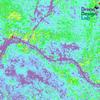















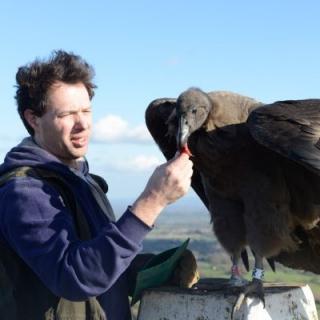


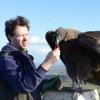

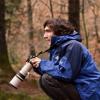


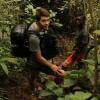
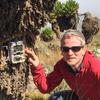








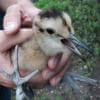












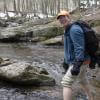





26 September 2022 10:20pm
Hi Roland,
This is really amazing, great to hear about your set-up! I'm just wondering what the overall cost was to set up this system? Just thinking in terms of setting up something similar in other parks and what they should expect with regard to price. Would also be great to hear about the overall effort, e.g., hours/team members required. It would be great to have this act as a blueprint for other organizations/research stations wishing to deploy a similar system within their respective national parks/areas/etc.!